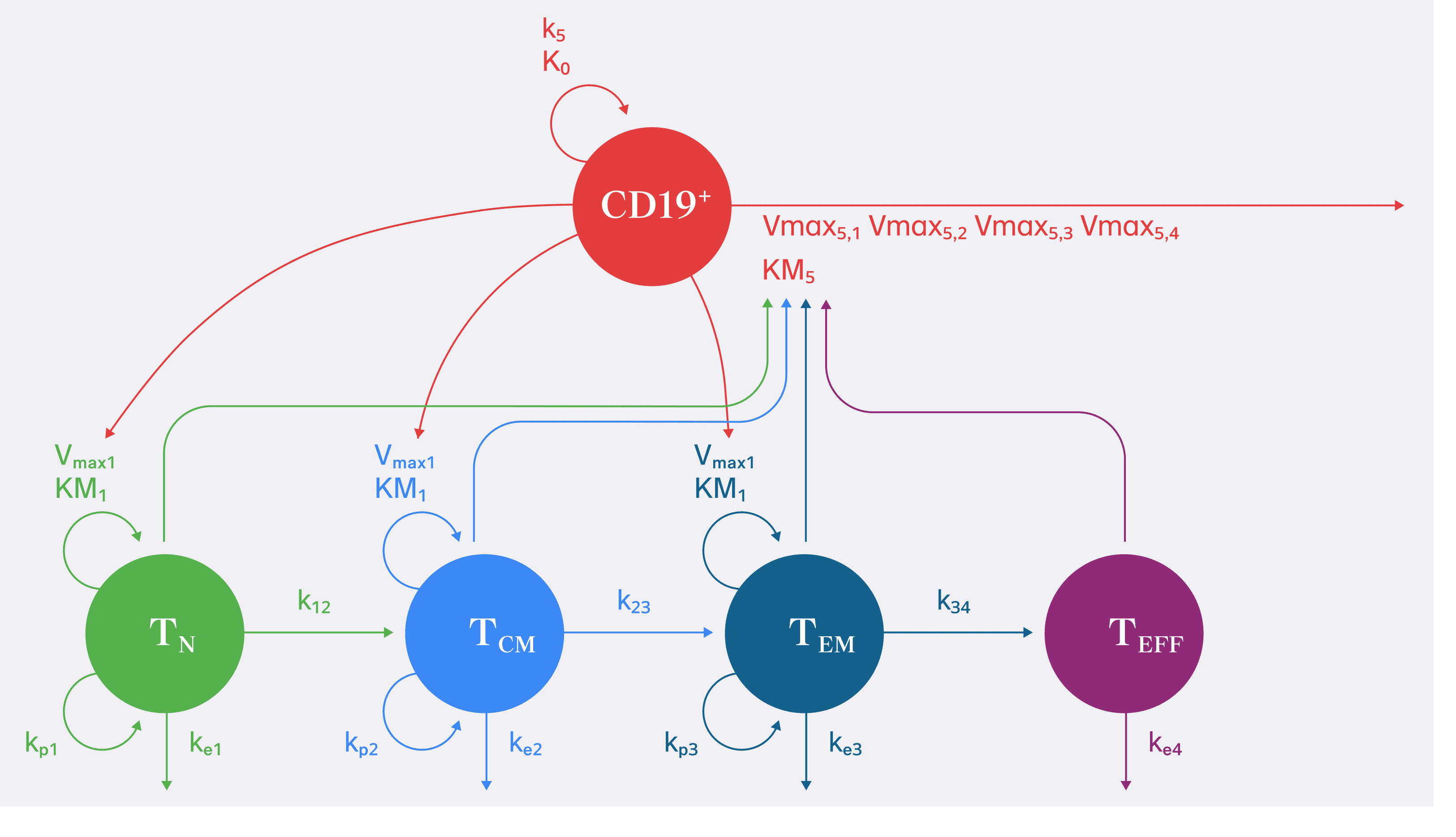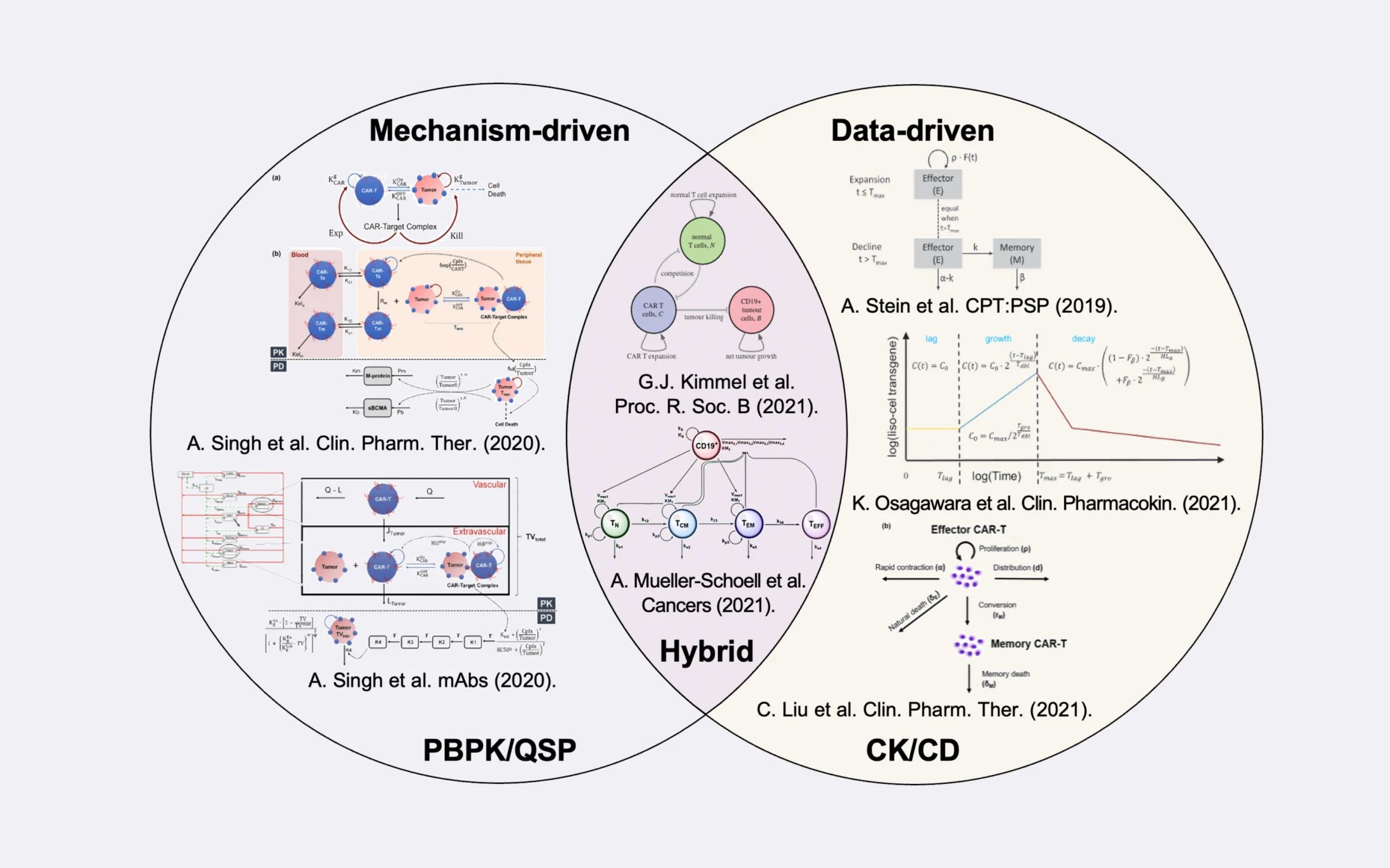
Genetically modified T cells
Dr. Anna Mc Laughlin has dedicated her efforts within oncology to model-based treatment optimization of targeted anti-cancer therapies, including CAR-T cells (Chimeric Antigen Receptor T cells), anti-hormonal drugs, and tyrosine kinase inhibitors.
– There has been a remarkable success of CAR-T cell therapy in treating aggressive hematological malignancies such as lymphoma. Though it’s is not just limited to blood cancers – researchers are also exploring its potential in other cancers and other indications like autoimmune diseases. The unique kinetic and dynamic properties of CAR-T cells, setting them apart from other therapies, add a fascinating yet challenging dimension to my daily work, Anna Mc Laughlin says.
Basically, CAR-T cell therapy is a form of immunotherapy that modifies a patient’s own T cells to enhance their ability to combat tumor cells. This therapy starts by collecting the patient’s T cells through a process called apheresis. These T cells are then genetically modified in a laboratory to produce chimeric antigen receptors (CARs) on their surface, enabling recognition of specific proteins found on the surface of tumor cells. Once the T cells are engineered with CARs, they are multiplied and re-infused into the patient’s bloodstream. These modified cells then locate and attack tumor cells across the body, effectively targeting and destroying them.
– A challenge is that up to 60 percent of the patients do not sustain a long-term response, so early prediction of response is crucial. Various factors have been linked with poor outcomes, for example a high initial tumor burden, or a low CAR-T cell maximum concentration, says Anna Mc Laughlin.
Optimizing CAR-T cell treatments
During her doctoral studies, Anna developed a mathematical model that could predict the concentration-time profiles and survival of patients receiving CAR-T cell therapy. However, this model relies on a limited group of patients and requires clinical validation before potential use in the future.
Notably, there is a clear exposure-response relationship, meaning that patients with higher maximum CAR-T cell concentrations respond better to the therapy. At the same time, there seems to be an absence of a clear dose-exposure relationship: increasing the dose does not lead to an increase in the measurable number of infused CAR-T cells.

– This means we need alternative methods beyond adjusting the dose to optimize CAR-T cell treatment success, Anna Mc Laughlin explains.
At Pharmetheus, she recently authored a review manuscript delineating ten actionable variables to optimize CAR-T cell exposure within a MIDD framework, which could significantly improve how effectively and efficiently this therapy is working, and this past year, she has been invited to speak at several conferences.
Emerging immuno-oncology therapies
But CAR-T cell therapy is not the only promising therapy emerging within immuno-oncology. As Anna points out, it is of essence to bring more effective, safe and accessible therapies to market, both within immuno-oncology and oncology in general, to combat cancer as a rising cause of death.
– It is a matter of global justice and equity. Poorer countries have fewer resources to deal with a large share of the global cancer burden, Anna McLaughlin says.
For instance, 1 in 12 women living in richer countries will be diagnosed with breast cancer, and 1 in 71 will die from it, compared to in poorer countries where only 1 in 27 women will receive a positive breast cancer diagnosis, but 1 in 48 will die.
– Through investing in oncology research and therapies, we can help advance therapies and provide input to regulatory agencies around e.g biomarkers related to patients best benefiting from treatment.
At university Anna worked with finding optimum doses of already approved drugs. With conventional drugs, like most breast cancer drugs, there are many approved dose levels, and increasing the dose will result in increased concentration, and often better efficacy. With CAR-T cells, clear dose exposure relationships don’t exist. Because of this, optimizing the product already during the discovery and early development phases is crucial to success.
– I really appreciate that I get to work with clients in the early phases, and contribute to bringing new therapies to patients as efficiently as possible. It feels impactful and satisfying, says Anna Mc Laughlin.
About Anna
Case study

Optimizing CAR-T cell exposure
In absence of clear dose-exposure relationships, there is a need to find other means to optimize CAR-T cell exposure.
